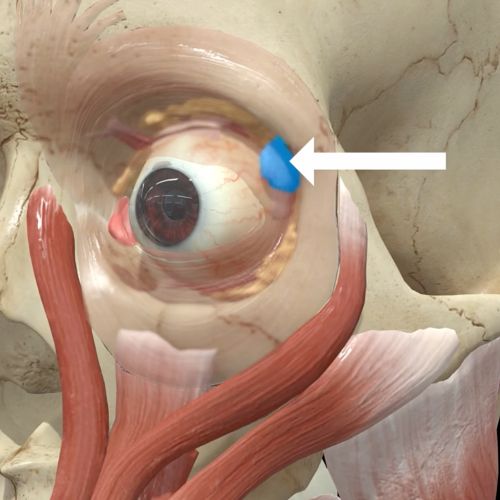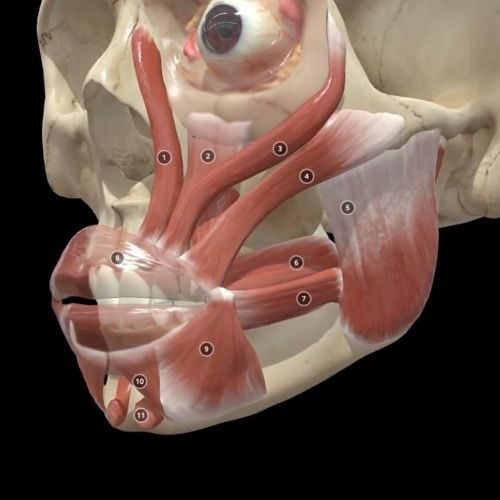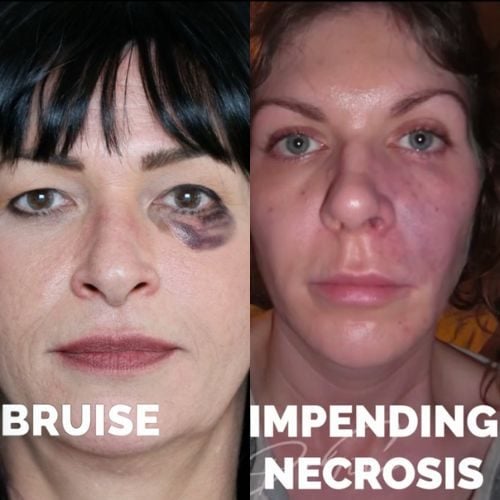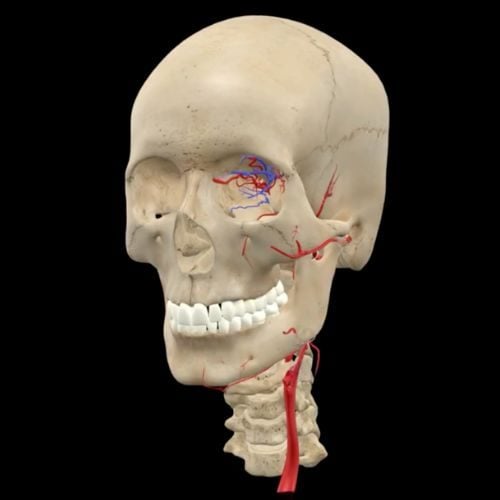- Mail us: support@drtimpearce.com
How to deal with a Vascular Occlusion: Real Case Study
You may be interested
 Dr Tim Pearce
Dr Tim Pearce
Dr Tim Pearce has been practicing medical aesthetics for over 10 years, and in April 2018, he experienced his first vascular occlusion when injecting the dermal filler.
This article has been taken from the A True Story: Emergency Reversal of Filler interview with Dr Adam Cheong on the Aesthetics Mastery podcast (found on iTunes and Soundcloud).
In this article, Dr Tim offers a real account of how he dealt with the occlusion, for his patient to leave the clinic with…
- Zero risk of impending necrosis
- Reassured and happy to book in for re-treatment
Click the Download button below to receive your FREE step-by-step guide to the Emergency Reversal Protocol:

Hearing an exact account of what it’s like to experience the rescue process of a vascular occlusion will hopefully help clinicians alike – as unlike so many other emergencies in healthcare, for aesthetic practitioners, so many operate on our own.
It’s not like you can talk to someone who’s had a vascular occlusion happen to them 10 times. Even within the SkinViva Training school and the 1500 strong network of practitioners who we support online, they’re very rare.
How did you know there was a vascular occlusion?
Thankfully, it was a lovely laid-back client who I’ve done multiple lip treatments on over the years. We’d pretty much finished and as we had a tiny bit of Volift left she asked, “will you pop a little bit more in”.
As I put the needle in, I aspirated as I always do, started injecting and as I created a linear thread there was a little flash.
My first thought was a false reassurance – “No, it can’t be. This is just a normal day”
I even changed my needle and thought about doing one more injection, but I stopped myself to check again.
Interestingly, pressing the area lightly with a cotton bud and the capillary refill was present. But I wasn’t convinced. Then when I then pushed much more comprehensively on the whole lip and lifted my hand, the difference was striking.
There is a huge difference in a little push to check for capillary refill when it’s just happened and a full compression of the lip and then lifting. It couldn’t be more different.
One was falsely reassuring, and the other was obviously an occlusion.
In what part of the lip did the vascular occlusion occur?
It was an injection in the middle of the lower lip and I was actually on the anterior side of it, so it wasn’t a deep injection. I was injecting the medial part of the lip, but the blockage appeared to arrive on the lateral part of the lip.
The interesting thing for me was it wasn’t a deep injection. Whenever I use Volift, I tend to be quite superficial because it’s a nice soft product and I don’t need to hide it a long way from other structures. But there is a variant, about 1% of people (stat from a conference at IMCAS) have quite an anterior inferior labial artery. And my patient must have been one of those.
Read my article on how to reduce the risk of blocking the columella artery.
Why didn’t it seem like an occlusion when pressing with little pressure?
It could be because there are collaterals that supply the same area. It is obviously a circular artery as it goes all the way around the mouth, so it might be that there is a slower blood flow that replenishes some of the lip. Which is why true necrosis might be rarer than blockages, I’m sure many more people have blockages that don’t necroes.
The other thought I had was that because there is enough blood in the tissue, that if you push it only a little bit you are not squeezing any out of the tissue, and it just re-flows. So, your capillary refill is refilling from smaller vessels quite nearby but not from the main artery.
And really, what you want to do is compress all the small vessels and all the capillaries to squeeze out all that blood. And that was the huge difference.
It’s much easier to diagnose the longer it’s left, so a good tip is to keep the client behind for a bit after a treatment if you’re unsure because it will change colour.
How did you reassure the client?
 It’s a very emotional thing for an aesthetic practitioner to go ahead and reverse someone’s procedure.
It’s a very emotional thing for an aesthetic practitioner to go ahead and reverse someone’s procedure.
I remembered something that I wrote on my protocol, which remains calm – something as a medical professional, you have developed an instinct too. Knowing that your instinct to panic is literally the worst thing you could do and it will make it a lot worse for everyone.
I went into super calm mode and I reminded my client of what I had said in the consent process.
“Remember what I told you about the risks of a blocked blood vessel, I’m very sorry but it looks like there is a little vessel on your lower lip that is blocked. So, the best thing for us now is to reverse that procedure.”
Consultation Tip:
I always go through in the consent not only the risk of an occlusion happening, but also the procedure if it does happen. I do this for 2 reasons:
- It’s going to help you do the thing that you say you were going to do. As appose to flip out when you’ve not thought about it for 5 years and think it won’t happen to you.
- Your patient has then heard it already, so they’re more prepared.
How did the patient react?
My client is quite laid back and my introduction to this reflected her personality, so she was quite accepting of it. I explained what I was going to do and why, I consented her again – I think a lot of people would panic and just start injecting hyalase. So, I got out a new consent form and re-consented her.
In my opinion, you have several hours at least before real tissue necrosis occurs. There is no reason to panic and start injecting hyalase in seconds, you can compress tissue and it will rebound.
It’s certainly not a minute by minute problem, it’s an hour by hour.
Did you do a hyalase patch test for allergies?
I did. There are a lot of people who would not recommend doing a patch test but I was more concerned of the risks should I not run a test.
In my opinion, it’s all around considering your environment. Should your patient have an anaphylactic reaction, what would you do?
An anaphylactic reaction is much more serious than necrosis.
Tip: I do also recommend you do a control next to the hyalase injection with saline. I did see someone on a forum referring to something she thought was an allergic reaction. To me it looked like it could have just been redness from the injection. A control test will allow you to see the difference.
An allergy test is generally given in the inner forearm and it’s an intradermal injection. It’s just a small bleb of the control patch and then the hyalase. Making sure we mark carefully which is which. And you’re looking for a significant difference between the two. If one was a lot redder and developed a wheel (a hive), then you should be worried about an allergy.
Read my article on what the associated risks of hyalase are? Where you’ll also find information on what to do should the patient have an allergic reaction.
How long did it take for the hyalase to work?
The one thing I would like to point out from this occasion as well as the other times I have dealt with occlusions, is the length of time it takes to unblock a vessel is longer than feels nice!
So basically, what happens to both the clinician and patient is after a certain amount of time you begin to think it’s not going to work and panic sets in.
The first time I experienced an occlusion in the SkinViva clinic, it was around 45 minutes. This time, I knew it was going to be long but I didn’t give an estimate to the client. To be honest, I didn’t have a timeline in my mind. If it were to happen again, I would say expect 90 minutes before we get any results from this process.
Had I done that, it would have massively helped to maintain the emotion. My laid-back patient became quite anxious around the 45-minute mark – and started to say things like, “It’s not going to work, is it?”
I was reassuring her, but I hadn’t told myself yet to be patient and that it was going to take 90 minutes and that would have helped me to give her a much more certain message.
It was only a tiny amount of Juvederm Volift, so I was confident.
Could it take longer for the hyalase to dissolve the dermal filler?
You’re relying on the penetration of hyalase through the artery, and if it’s a bigger artery maybe that would take longer. I do wonder if you’ve massaged it and if some of it has gone into the capillaries whether that would take less time to dissolve because you’ve got a much higher surface area for the hyalase to pass through.
There’s also the type of filler that you’re using – if it’s a long-chain hylaronic acid (like Juvederm 4) as appose to Volift (a mixture of short and long chains), I would assume it’s going to take longer.
Different dermal fillers have different properties, so there are variants that could make the time for the hyalase to work longer.
It isn’t immediate. It does take some time. So, don’t panic.
Is there anything else you did to prevent necrosis?
The evidence is mainly based on what we learn in clinical medicine that might be related. Swelling in the brain can decrease blood flow, so we prescribe steroids as that can improve blood flow to the brain so maybe it could improve blood flow to a swollen legion that’s necrotic. But it’s not based on this scenario, it’s based on similar scenarios.
Similar with aspirin, you’re going to reduce clotting and a clot is just one more thing that can cause a problem. It makes sense and feels low risk to me. So, we did give her 300 milligrams of aspirin while we were waiting for the allergy test.
How many vials of hyalase did you use on the patient?
In the end I used 5 vials of hyalase on my client, which is a lot. I did have the luxury of being at SkinViva and we probably had about 30 vials in the clinic at that time, so I wasn’t holding back.
I recently read about this pulsed high dose hyalase protocol that you can use – that isn’t in the ACE guidelines. It made sense to me because what I noticed from the first time we had pending necrosis in the clinic, is that when you inject the hyalase it fills the area rather rapidly and then it also disappears quite rapidly.
So, you end up massaging this lip that feels volume depleted. And I remember on the first occasion how shocked I was at how thin the lip felt. I remember thinking this also means that the hyalase is also dispersing and it’s not where I want it to be, I need it to be a high concentration of hyalase around that artery.
Therefore, it does make sense to me that you should use the clinical assessment of the volume you’ve injected as a sign of how high the hyalase is concentrated around that area. The reason it’s in bee stings is because it helps to permeate – it flows away from the area. And this means to me we should be considering that fact when we are looking at how often we apply.
One injection of hyalase and then leaving it is vastly less likely to work than multiple pulses. This might be a reason to use a 5ml dilution, which is the upper end of what is on the ACE guidelines. Because you could inject a ml every 15 minutes and you would be maintaining hyalase in that area. That could be one thing you could do if you don’t have a lot of hyalase with you.
How long did it take to prevent impending necrosis?
It took around 90 minutes until I was happy. I thought it was improving around 45 minutes but not enough for me to communicate this to the patient. I kept checking it and thought it looked slightly better but kept going.
Then at 90 minutes I became elated!
At 90 minutes every time I pushed on it, it was just filling rapidly back with blood and it felt amazing.
My patient was still in a state and I have a principle of over caring for people who have had a bad experience. So, I offered to review her the next day and visit her at home to check on it.
My client was great and wasn’t very bruised (hyalase helps to get rid of bruising). She was very grateful I came to see her and even rebooked to redo the treatment.
I maintained a sense of certainty for her, even if at moments my head drifted into “what if this doesn’t work”, I’d never communicate that.
I’m also going to use a cannula for her next treatment, which will make her feel better about the procedure. I know it will be safer and most importantly, she will feel safer.
Are you following Dr Tim Pearce on Facebook? He regularly does a Live video on any concerns or questions that come in via the aesthetic community.
Related Articles
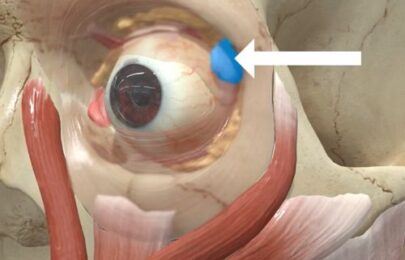 Bestseller
Bestseller
Avoiding Botox Eye Complications From Dry Eye to the ‘Psycho Look’
September 30, 2025
Avoiding Botox Eye Complications From Dry Eye to the ‘Psycho Look’
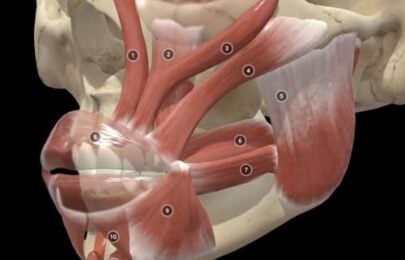 Bestseller
Bestseller
How to Fix a Crooked Smile with Botox
September 25, 2025
How to Fix a Crooked Smile with Botox
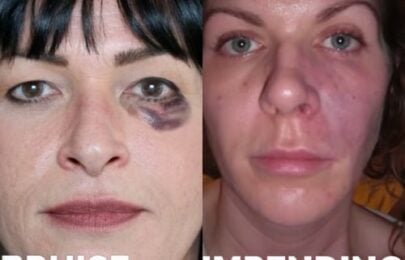 Bestseller
Bestseller
Multiple Causes of Vascular Occlusion and Necrosis
September 23, 2025

